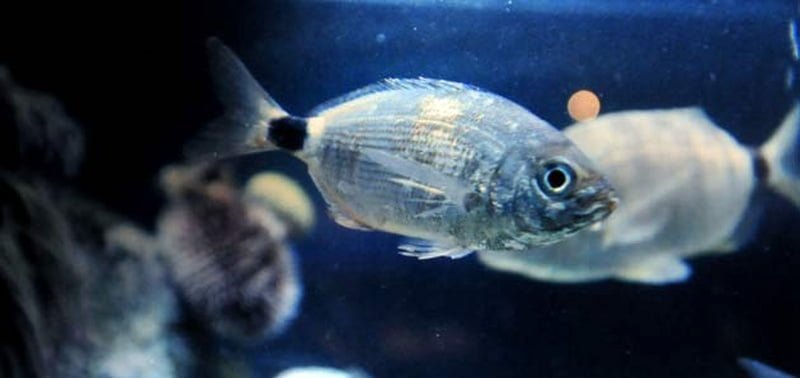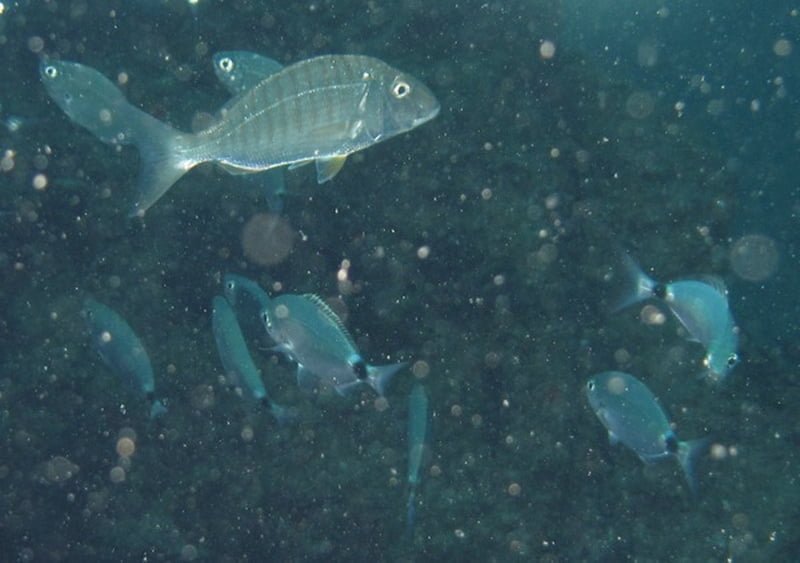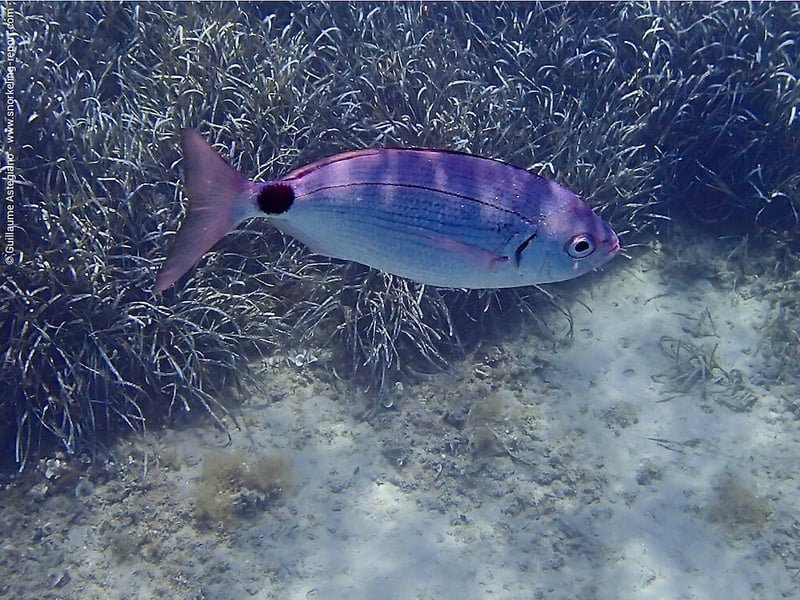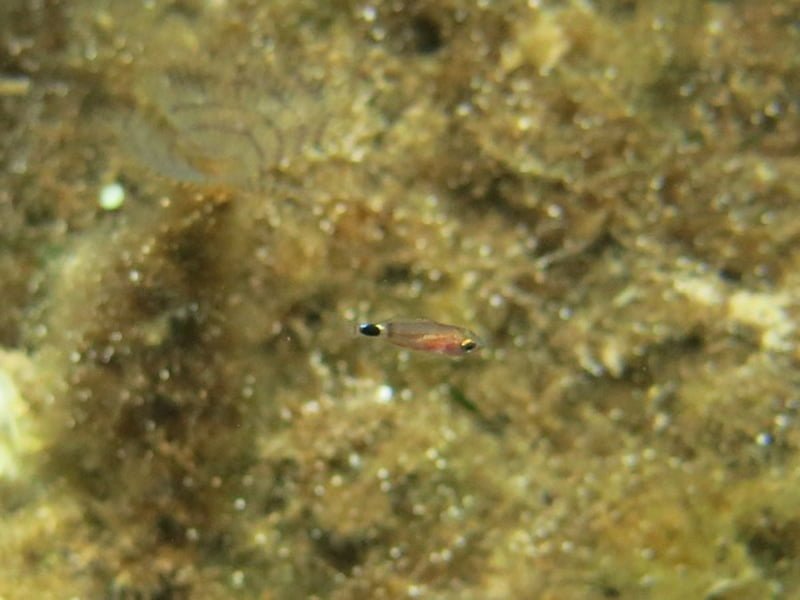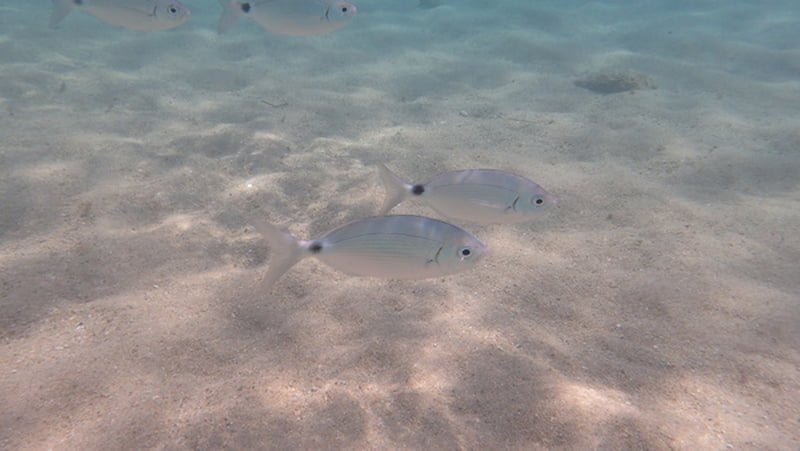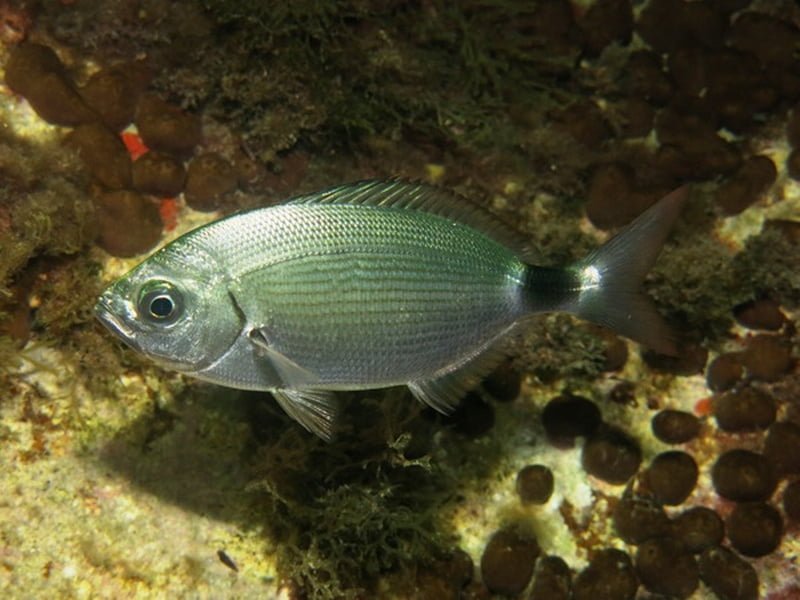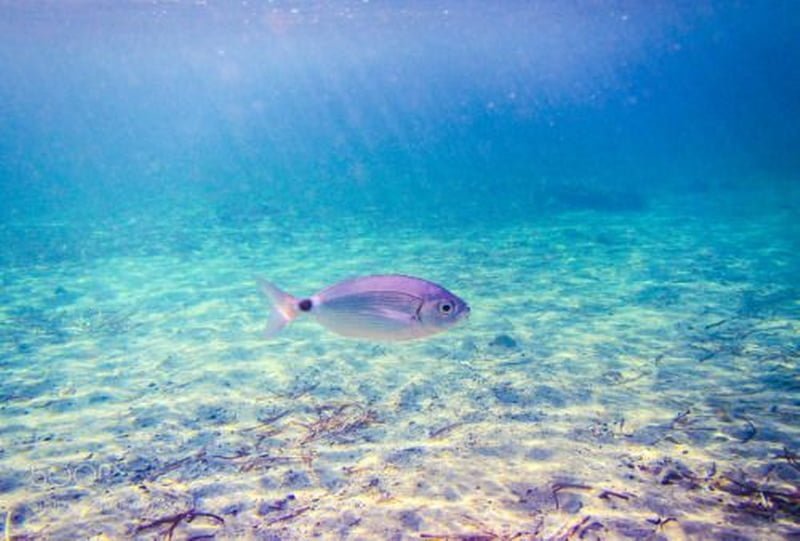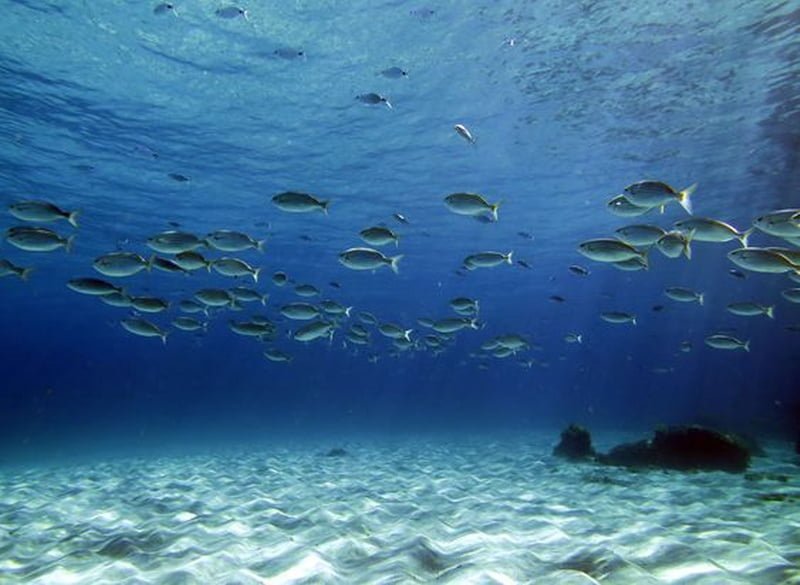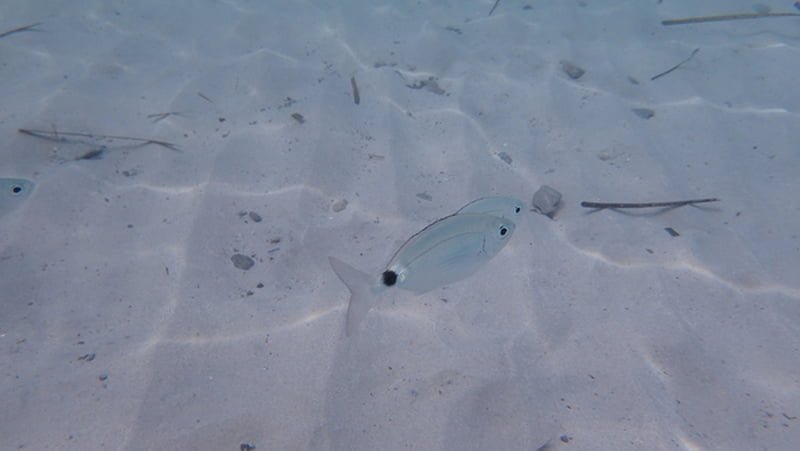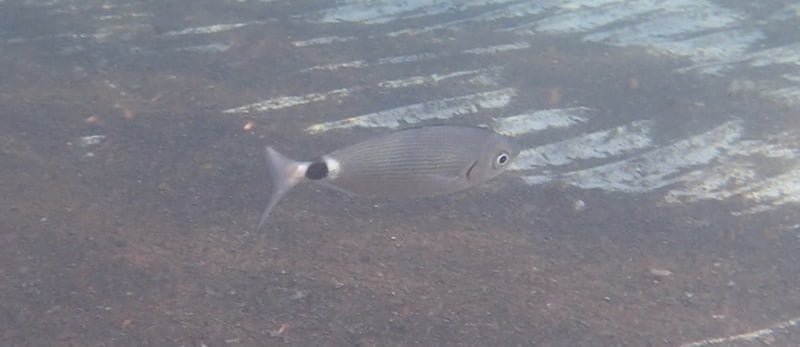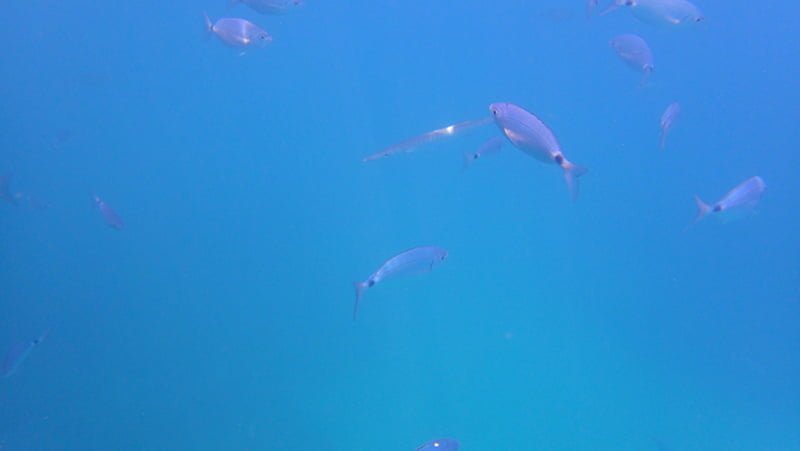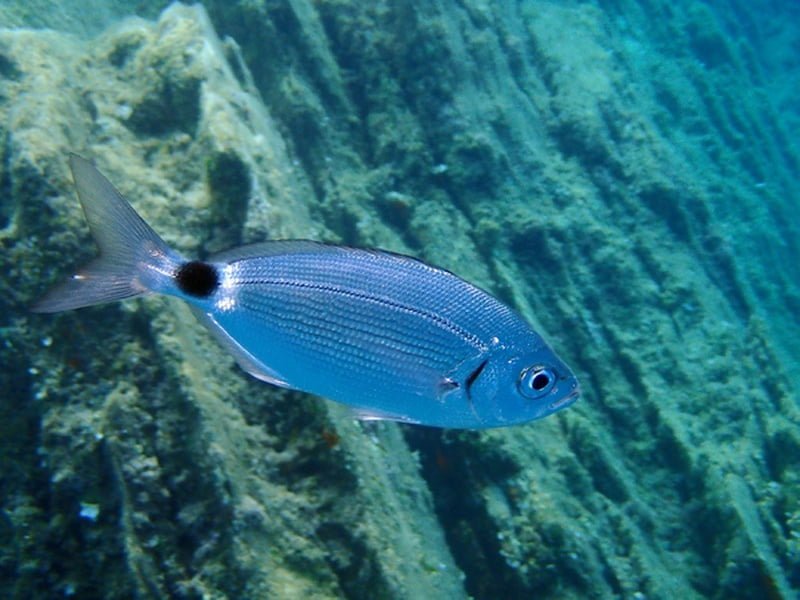Oblada Melanura
– Saddled SeaBream –
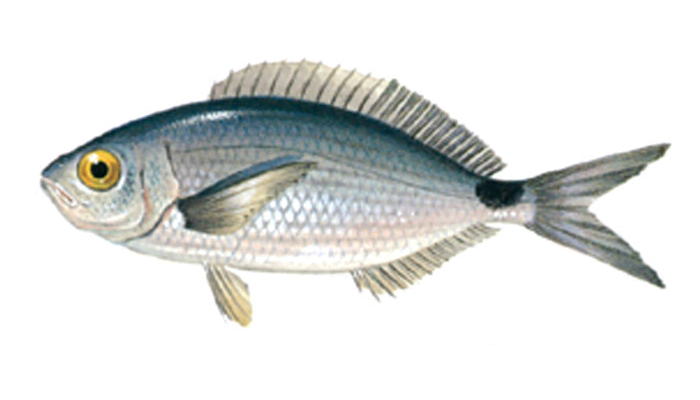
| Scientific classification |
|---|
Oblada melanura (Linnaeus, 1758)
| Kingdom: | Animalia |
| Phylum: | Chordata |
| Class: | Actinopterygii |
| Order: | Perciformes |
| Family: | Sparidae |
| Genus: | Oblada |
| Species: | O. melanura |
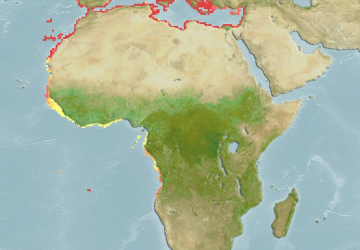
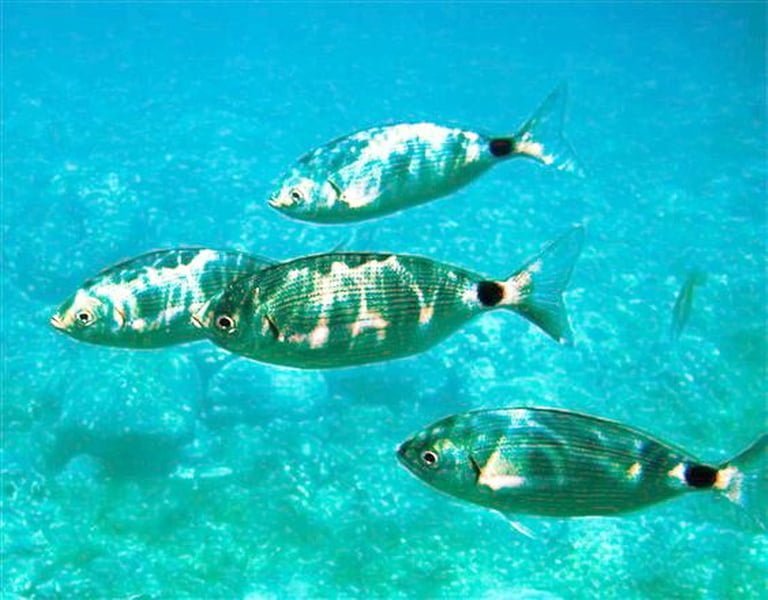
The saddled seabream (Oblada melanura), also called the saddle bream or oblade, is a species of fish of the family Sparidae.[1] It is monotypic in the genus Oblada.
Description
The oblade is a Sparid with an oblong body, little laterally compressed.
The muzzle is short with a terminal, oblique mouth facing upwards . The eye is large (the diameter of the eye is about half the height of the head).
The general color of adults is silvery bluish gray, with paler lower part and belly. Below the darker side line, longitudinal lines are more or less apparent on the sides. The fins are not colored. The main distinguishing feature is a black saddle-shaped spot, surrounded by white, on the caudal peduncle . The spot on the caudal peduncle is very visible in the juvenile.
The oblade has a single dorsal fin with 11 spiny rays at the front followed by 13 to 14 segmented rays. The anal fin has 3 spiny rays and 12-14 segmented rays.
There are 8 to 10 incisors with a notched edge on the front of each jaw and a row of small conical teeth slightly curved on the sides. This row is internally lined with small grained teeth.
The maximum length recorded for this species is 34 centimetres (13 in),[2] and maximum recorded weight is 0.93 kilograms (2.1 lb). Commonly specimens are around 20 centimetres (7.9 in). The mouth is relatively small, with lower jaw being little bit in front of the upper jaw.
It is a gregarious fish, spawning in June and July. The saddled seabream is an omnivorous fish, but feeds mainly on small invertebrates.
Distribution and Habitat
It is found over seagrass and rocky bottoms in the Mediterranean Sea, Bay of Biscay, Madeira, Cape Verde, Canary Islands and Strait of Gibraltar to Angola.[2]
It can be found between 0 and 30cm, but more commonly between 5 and 20cm. Often can be found near surface, not far away from the shore.
Biotope
The oblade is a gregarious species. It forms more or less dense benches above rocky bottoms or Posidonia meadows. The adult is found mainly in open water, near the coast and generally from the surface and up to 10-20 m depth. The oblade makes forays on rocky bottoms and in Posidonia or eelgrass meadows up to 30 m. In winter it goes further out to sea and descends lower.
The juveniles frequent, in abundant groups, the rocky surface areas.
Similar Species
Oblada melanura is sometimes confused with the common sar ( Diplodus sargus ), but the latter has a higher shaped, more compressed body, a black-edged operculum and often transverse stripes.
The oblade can also be confused with the African sparaillon ( Diplodus bellotii ) when the latter is present in the same area (African coast and southern Spain). However, the latter has, like all sars, a higher and more compressed body and has a small black spot on the back of the head.
Alimentation
The oblade is an omnivorous fish that feeds on algae and zooplankton * when in open water. The diet of adults includes various tiny animals, among which dominate small crustaceans (copepods, etc.), but also larvae *, invertebrate eggs and fish. It is also an opportunistic predator consuming small benthic animals and algae during these forays on the seabed.
Larvae and juveniles are omnivorous and feed mainly on zooplankton, like adults. The proportion of planktonic preys * decreases with growth, in favor of benthic * preys.
Food activity is most intense during the day, in spring and summer, when the water is warmer and plankton are abundant.
Reproduction
The sexes are generally separate, but some individuals exhibit * protogynous * hermaphroditism (first female, then male).
Laying and fertilization take place in open water at the end of spring, from April to June in the Mediterranean. Eggs and gregarious larvae are planktonic until the end of summer. These young people then form large groups which will reach the shallow coastal areas. The 1 cm juveniles are already identifiable by their spot on the caudal peduncle.
Various Biology
The lifespan can be more than 10 years (example of an 11-year-old female, measuring 33 cm, taken in Croatia). The weight of adults from 25 to 30 cm is a little over 300 g. A maximum weight of 700 to 800 g has been reported.
The species is relatively fearful but can approach to seize a prey in the environment stirred by the diver.
Further Information
The oblade is edible, its soft flesh is quite popular. It is rarely found on the markets in France, but is regularly present in the markets of Spain, Sicily, Greece, Turkey, Egypt, Cyprus and Adriatic. It is the subject of semi-industrial fishing (Adriatic and East Atlantic), artisanal and leisure.
Fishing
It is important food fish, often found fresh on local fish markets. It is caught in fish traps and various nets all year long. Bait in traps are various fresh and/or salted fish and fish chunks.
Saddled seabream can be hooked day and night, but much better during night. It will bait on bread, cheese, paste, fish chunks, mussels, but best results can be achieved using live bait like live prawns.
When trolling near the shore, it is commonly caught on lures mimicking small Mediterranean sand smelts, various mullets or prawns.
Cuisine
Meat is soft and tender. Smaller specimen are often fried or used for fish soups, while larger specimen can be barbecued, grilled, prepared as part of mixed fish stews. Served with olive oil, garlic, parsley and some lemon juice can be very tasty.
